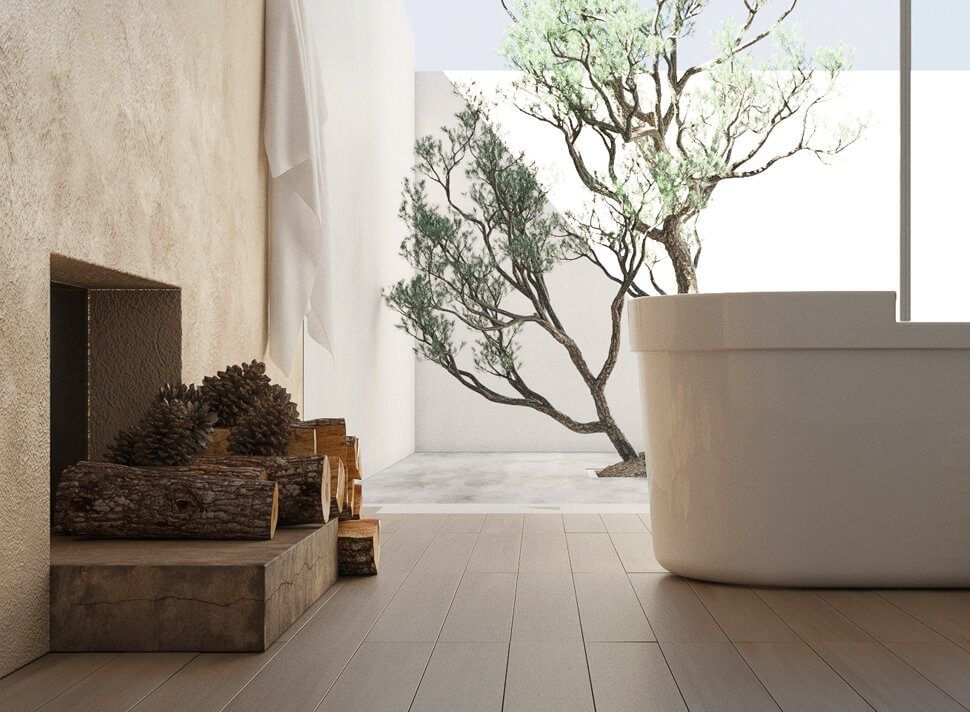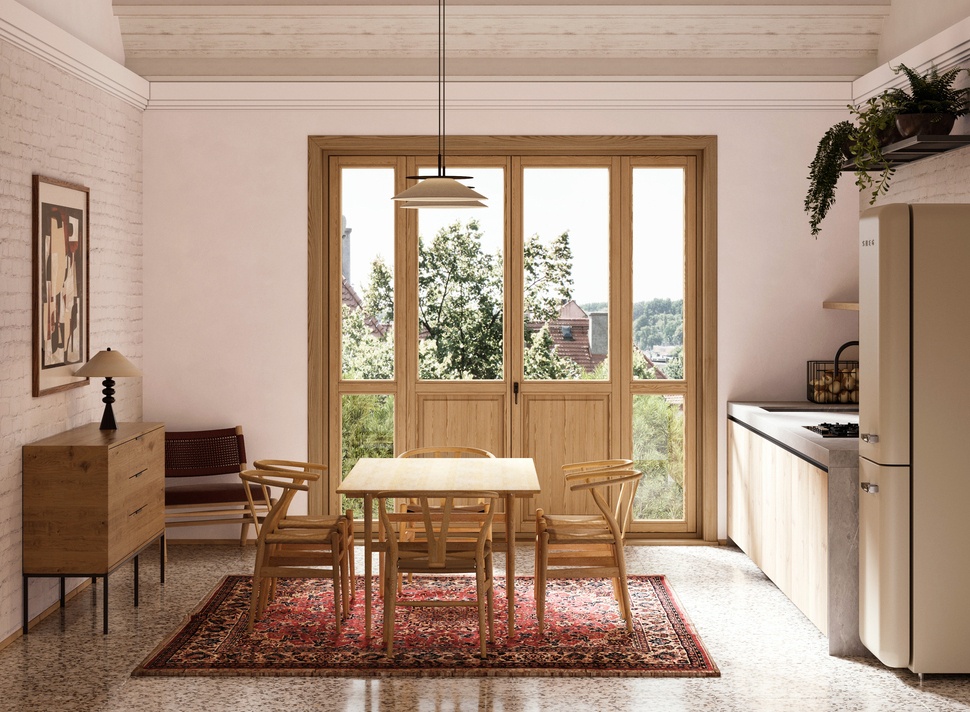From Blueprints to Pixels: Modernizing Home Design with Interior House Rendering
Technology has played a transformative role in the ever-evolving world of architecture and interior design. Gone are the days when designers and architects relied solely on blueprints, sketches, and physical models to convey their ideas to clients. Today, the process has undergone a digital revolution, and a pivotal tool has emerged—interior house rendering. This two-part article will delve deep into this fascinating realm, exploring how interior house rendering has modernized home design, its applications, benefits, and the future it promises.
Introduction: The Digital Transformation of Home Design
Home design is witnessing a paradigm shift as traditional design methodologies make way for digital innovation. At the heart of this transformation lies interior house rendering, a technology pivotal in revolutionizing home design. This technology has redefined customer engagement and product visualization, blending online shopping's convenience with the immersive experience of a physical store. This article embarks on a journey through the evolution of 3D virtual showrooms, their technological essence, their impacts on retail, and their distinct advantages to businesses and consumers.
The Evolution of Interior House Rendering
Interior house rendering has evolved remarkably from basic hand-drawn sketches to sophisticated 3D virtual showrooms. The early beginnings of interior rendering can be traced back to hand-drawn sketches and scale models, which laid the foundation for future advancements—the Renaissance marked a significant development with the introduction of linear perspective in art, allowing for more immersive and realistic depictions of interior spaces.
The advent of photography further influenced interior rendering, providing a new medium for capturing and reflecting natural spaces. In the 20th century, they introduced 2D drafting techniques, offering more accurate spatial representations. However, the digital revolution transformed interior house rendering, introducing powerful computers and software capable of creating detailed 3D models and immersive virtual environments.
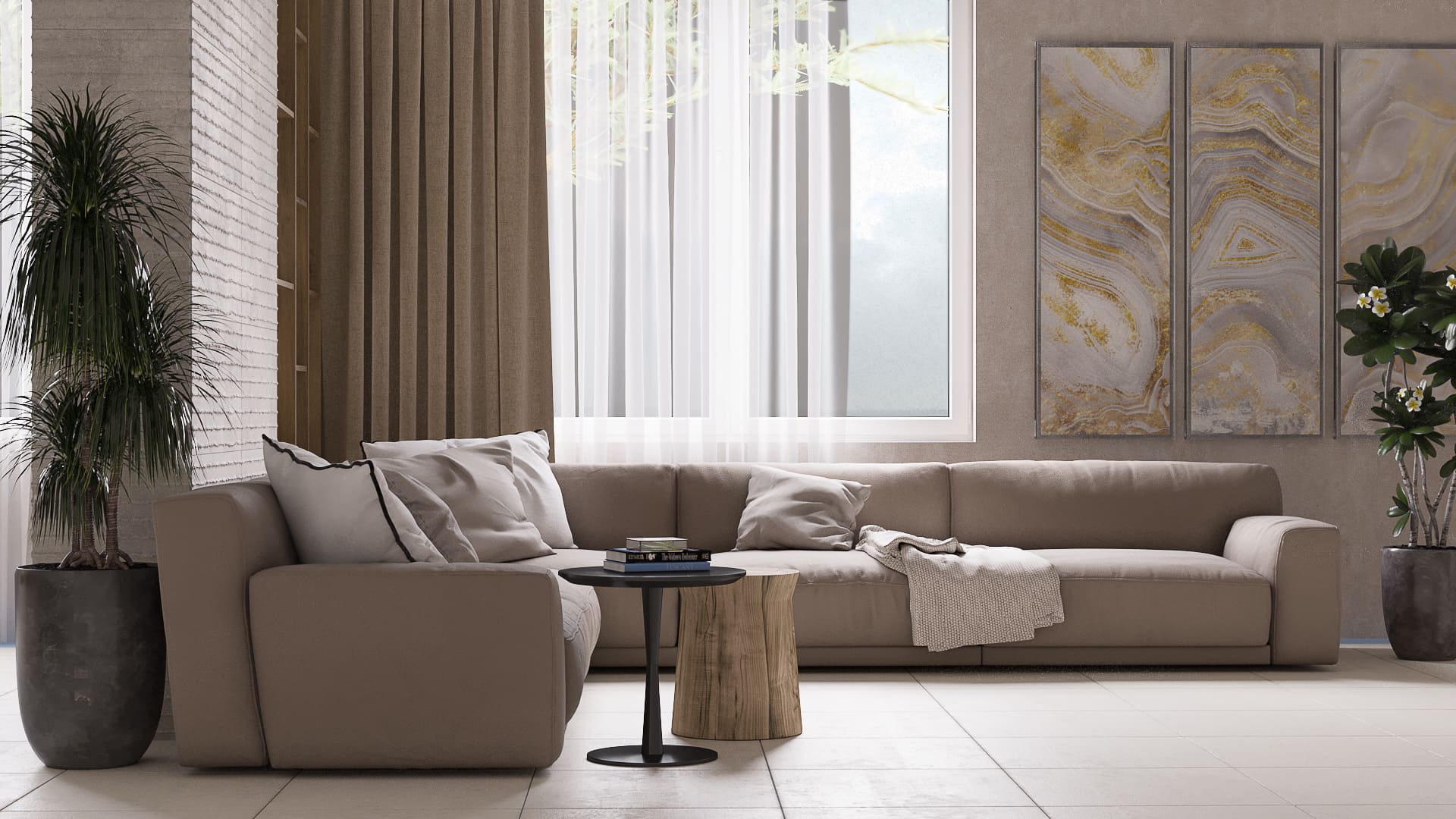
Image from Yousee Studio
These developments have culminated in the modern era of photorealistic rendering, where the focus on realism allows designers to create lifelike images virtually indistinguishable from photographs. Today, virtual showrooms blend VR technology with rendering, offering customers a real-time, immersive view of interior spaces, revolutionizing design presentation and evaluation.
The Art and Science of Interior House Rendering
Modern interior house rendering is a perfect blend of art and science. It starts with conceptualization, where designers and clients share visions, and composition, where the scene's framing and focal points are determined. Color theory plays a crucial role in evoking the desired emotions, while lighting design is meticulously planned to create ambiance and highlight architectural features.
Technologically, 3D modeling forms the core of interior rendering, where software like SketchUp or Autodesk 3ds Max is used to create detailed models. Texturing and mapping bring these models to life, with rendering engines like V-Ray and Corona Renderer simulating light behavior to produce realistic images. Hardware requirements are significant, with high-performance CPUs and GPUs necessary to handle the rendering process efficiently.
Collaboration tools facilitate communication between designers, clients, and other stakeholders, ensuring everyone is on the same page. Real-time rendering software allows immediate feedback and decision-making, further streamlining the design process.
The Applications of Interior House Rendering
Interior House Rendering: Transforming the Art of Home Design
Interior house rendering, a remarkable fusion of technology and creativity, has revolutionized the process of home design. This article embarks on an in-depth exploration of its multifaceted role across various stages of design, from conceptualization to marketing.
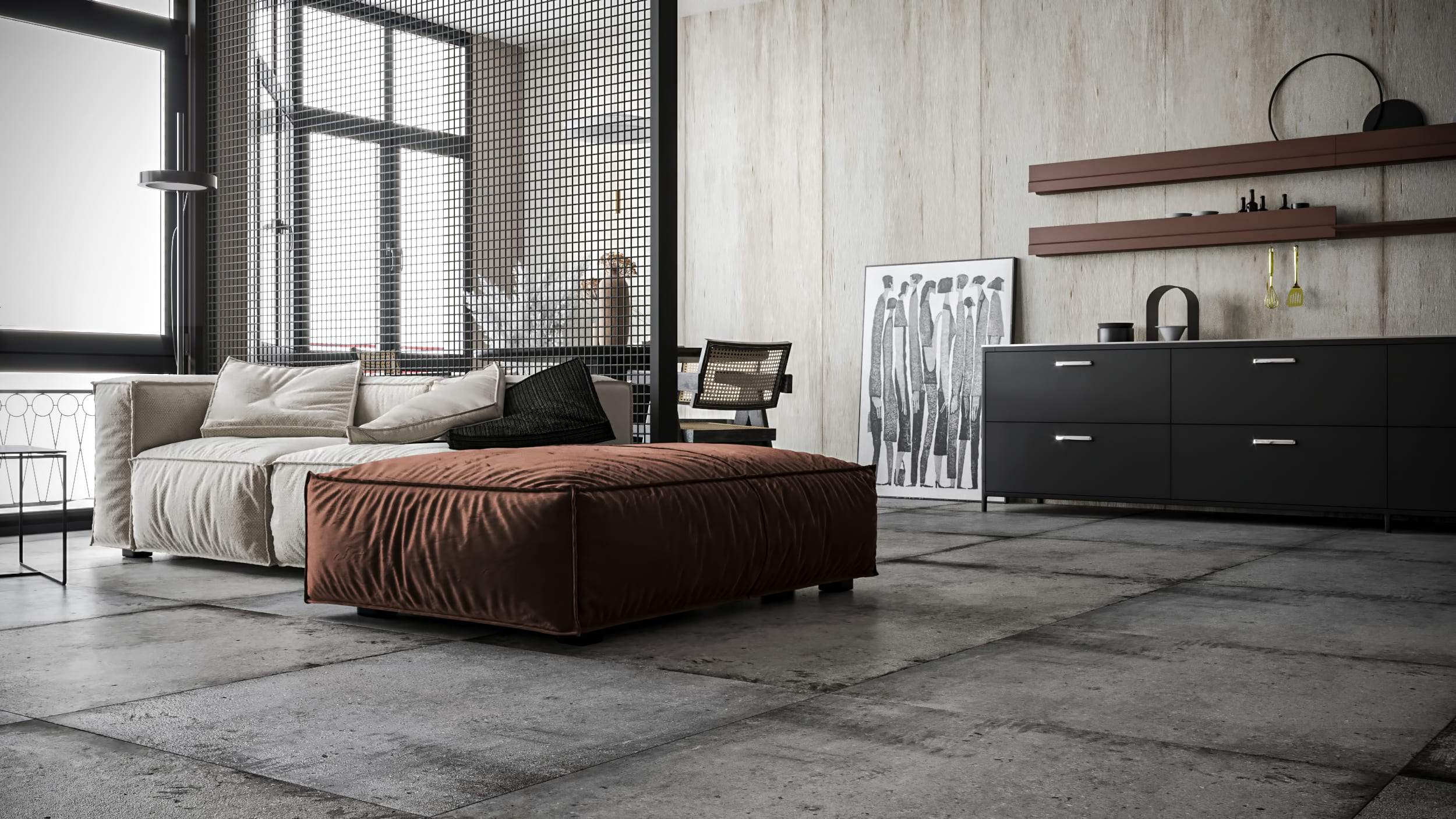
Image from Yousee Studio
Pre-visualization Phase: Envisioning the Future
In-home design, the journey often begins with an idea, a vision of what a space could become. Interior house rendering is crucial in this pre-visualization phase, allowing designers and clients to bridge the gap between imagination and reality. Through detailed 3D models, they can conceptualize spaces, experiment with layouts, and foresee how different elements interact within a room. This process is not just about creating a visually appealing design; it's about ensuring that ideas are practical, feasible, and aligned with the client's expectations.
One of the critical benefits of rendering in this phase is the ability to identify and address potential design issues before any physical work begins. It allows for exploring various design options, making it possible to try out different furniture arrangements, color schemes, and lighting setups without any real-world constraints. This flexibility significantly reduces the risk of costly changes during construction, making the design process more efficient and cost-effective.
Concept Development: A Playground for Creativity
As the design process progresses to the concept development stage, rendering becomes an indispensable tool for designers. It provides a platform where creativity can flourish, and ideas can be molded and reshaped until they align perfectly with the client's vision. Designers can experiment with various materials, textures, and architectural elements, visualizing how they harmonize within a space.
This stage is characterized by an iterative process of refinement, where each rendering brings the designer closer to the final design. It's a collaborative effort, often involving feedback from clients, architects, and other stakeholders. Making quick adjustments to the renderings based on this feedback is invaluable, enabling designers to fine-tune their concepts and ensure that every detail is correct.
In addition to the aesthetic aspects, this phase considers practical elements such as space utilization, ergonomics, and functionality. Rendering tools allow designers to simulate real-life scenarios, helping them understand how the space will be used and experienced by its inhabitants.
Client Presentations: Bringing Ideas to Life
For many designers, the most crucial stage in the design process is the client presentation. This is where ideas are shared, where visions are brought to life. Interior house rendering is pivotal, providing a realistic depiction of the proposed designs. Clients no longer have to rely on their imagination to understand the designer's concept; they can see it almost tangibly through detailed, lifelike renderings.
These presentations often serve as decision-making platforms. Clients can see exactly what their home will look like, enabling them to make informed choices about materials, finishes, and overall design direction. High-quality renderings can convey a space's mood, texture, and feel, often evoking emotional responses that can be pivotal in decision-making.
Moreover, with advancements in rendering technology, clients can now experience virtual walkthroughs of their proposed designs. This interactive experience provides a comprehensive understanding of the space, offering insights that static images cannot deliver.
Marketing: Capturing Imagination and Interest
In the realm of real estate and home design, marketing plays a crucial role. It's about capturing the imagination and interest of potential buyers or tenants. Interior house rendering has become invaluable in this context, providing photorealistic images that highlight a property's best features.
These renderings are used in various marketing materials, from brochures and flyers to online listings and virtual tours. They offer a glimpse into the property, showcasing its potential and appeal. For properties still under construction or in the design phase, renderings provide a powerful way to attract interest and secure commitments from buyers or tenants.
The impact of these renderings on marketing efforts must be balanced. They create a sense of desire, a longing to experience the space in person. For many buyers, exploring a property further often starts with the visuals they see in marketing materials. High-quality, photorealistic renderings can make a property stand out in a crowded market, drawing attention and generating leads.
The Role of Technology in Rendering
The advancements in rendering technology have been instrumental in elevating the quality and capabilities of interior house rendering. Today's software offers unparalleled realism, with features like advanced lighting algorithms, realistic material textures, and high-resolution outputs.
Designers have various tools, each offering different functionalities and strengths. Some popular rendering software includes V-Ray, known for its photorealistic outputs, and Lumion, favored for its speed and user-friendly interface. These tools continuously evolve, incorporating the latest computer graphics and visualization advancements.
Benefits Beyond Aesthetics: Why Interior House Rendering Matters
Interior house rendering offers more than just aesthetic enhancements. It is a crucial communication bridge between designers and clients, ensuring that the envisioned and final products are harmonious. This approach significantly streamlines the decision-making process by offering a realistic preview of the proposed designs, thereby saving time and reducing the need for costly physical models or changes during construction. Rendering also plays a vital role in sustainable design by visually representing eco-friendly materials and energy-efficient solutions. This not only aids in design but also promotes a more environmentally responsible approach to home design, aligning with current sustainability trends.
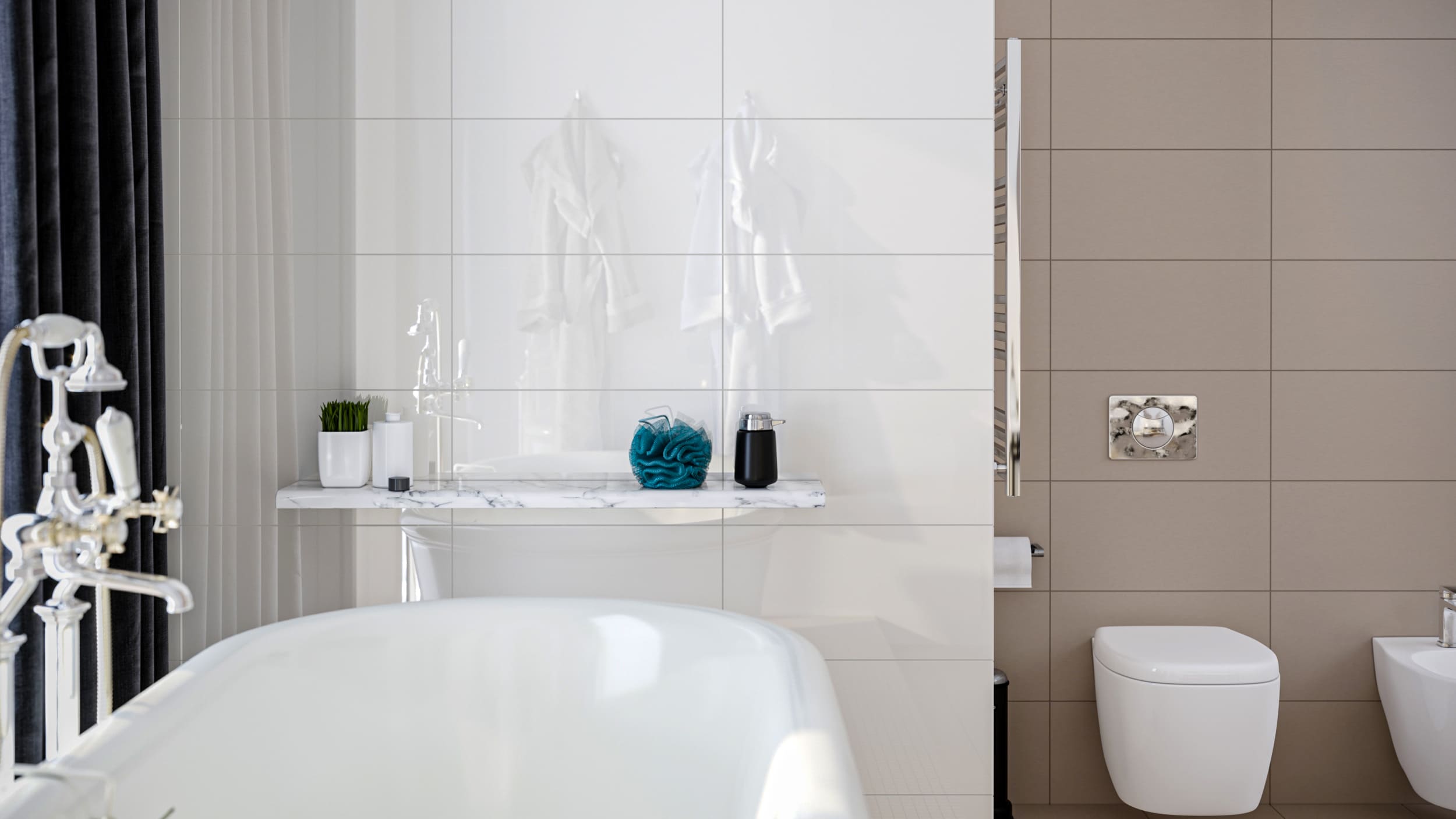
Image from Yousee Studio
The Future of Home Design: Emerging Trends in Interior House Rendering
Emerging technologies and evolving consumer preferences are shaping the future of interior house rendering. The integration of virtual reality is transforming the field, offering immersive experiences that allow clients to walk through and interact with spaces before they are built. Real-time rendering is another significant trend, enabling instant visual feedback during design. Additionally, artificial intelligence is increasingly being incorporated to provide design assistance and make suggestions based on algorithms and data. These advancements promise a future where home design is more immersive, personalized, and aligned with client's preferences and needs, pushing beyond the limits of traditional design approaches.
Conclusion: The Digital Renaissance of Home Design
In conclusion, interior house rendering plays a pivotal role in the digital Renaissance of home design. Its ability to combine artistic vision with technological innovation has opened new horizons in home design, offering an immersive and personalized experience. As technology continues to evolve, so will the capabilities and applications of interior house rendering, further transforming the world of home design.
Contact us at YouSee Studio for captivating 3D renderings and immersive virtual experiences.
Ray Lisbon is a content writer and the author of this article.

